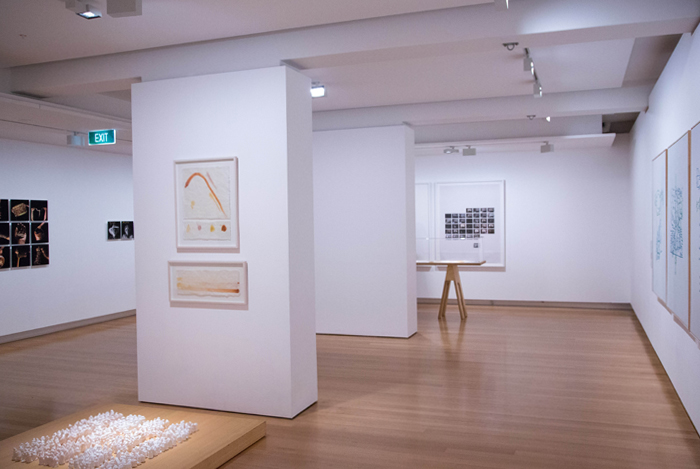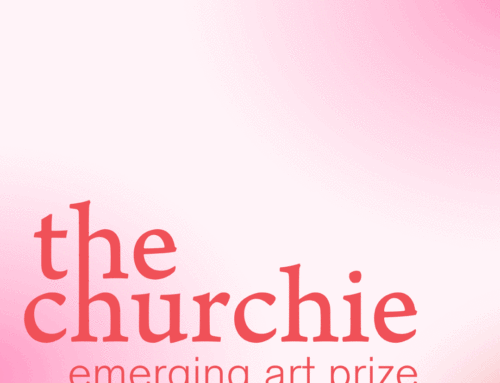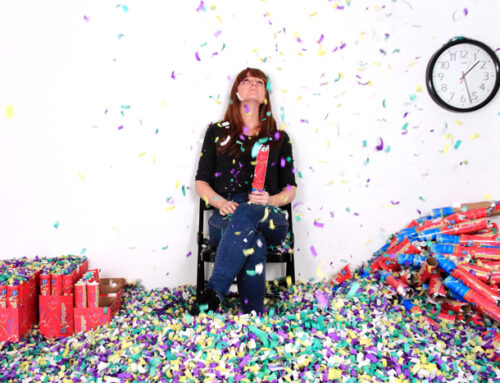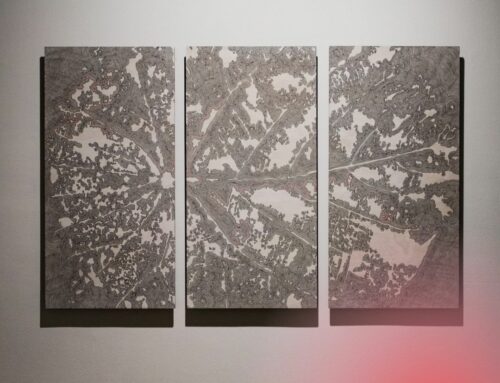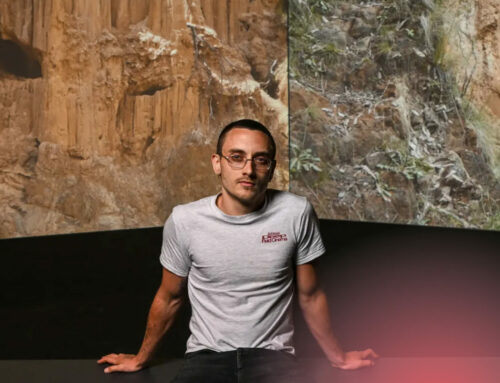The winner of the churchie national emerging art prize 2016 is Sara Morawetz for her artwork ‘How the stars stand (All sols) and (Dear NASA…)’. Created in consultation with NASA’s Goddard Institute for Space Studies and the Massachusetts Institute of Technology, Sara’s work examines the way in which humans measure and understand time through a performance staged over two months in 2015 at Open Source Gallery in Brooklyn, New York. In the performance, Sara examined the structures that time discreetly asserts, studying the physical ramifications that stem from making adjustments to the underlying axiom of time itself. Sara lives in Sydney and New York and is completing her PhD at Sydney College of the Arts, University of Sydney.
Guest judge Kelly Gellatly, Director of the Ian Potter Museum or Art (Melbourne University) awarded the non-acquisitive prize money of $15,000 sponsored by Brand + Slater Architects at the opening of the finalists’ exhibition at Queensland University of Technology (QUT) Art Museum in Brisbane on Friday 19 August. Kelly said “The winning work appealed for the complexity of its endeavour and for the artist’s commitment to it”.
Two artists each received a Sam Whiteley Memorial Commendation of $1,000 each, sponsored by Madison Cleaning and Painting Services: David Greenhalgh for his artwork Essay (On opposition) 2016 and Lisa Sammut her artwork For the time being, 2015–2016.
Now, in the 29th year of the prize, QUT Art Museum has taken on the role of exhibition partner and oversees a revised structure where artists are offered the opportunity to exhibit multiple artworks, thereby allowing work to be seen in the context of the artists’ overall practice. The new model for ‘the churchie’ aims to offer tangible support, nurturing and encouragement to a new cohort of emerging artists. This is particularly important, as like so many prizes, ‘the churchie’ has become embedded as a rite of passage for artists, as they move through their career to more substantial roles and opportunities, creating and innovating in this country and abroad. “It was important for us to present all the artists’ works in context so that Kelly could have a good understanding of each artist’s practice. This really enhanced the quality of finalists, and made the judging process all the more difficult,” said Vanessa Van Ooyen, Senior Curator, QUT Art Museum.
From a record field of over 1,000 artworks submitted from 445 entrants, 23 emerging artists were selected as finalists for ‘the churchie’ in 2016. Finalists were selected by a panel comprising Vicky Leighton, Head of Art, Anglican Church Grammar School; Daniel McKewen, artist; and Vanessa Van Ooyen, Senior Curator, QUT Art Museum.
An exhibition of the finalists’ work can be seen at QUT Art Museum in Brisbane until 13 November.
Prize Winners
Sara MORAWETZ
Sara Morawetz’s work investigates the metric of time as an elusive and invisible constraint that indexes both the orbital mechanics of planetary motion and a humanistic desire for measured experience.
Through her durational performance How the stars stand, staged at Open Source Gallery in Brooklyn, New York, in 2015, Morawetz examined the structures that time discreetly asserts, studying the physical ramifications that stem from making adjustments to the underlying axiom of time itself. For this work, Morawetz re-calibrated her time to reflect the local mean solar time on Mars, an act effecting a 2.7% lengthening of her day. Compared to a standard day on Earth, each ‘day’ of her performance became equivalent to 24h 39m 35s—creating a shifting sense of ‘time’ against the Earth’s solar phase.
In order to fully ascertain the consequences of this dynamic, the performance was conducted for a palindromic cycle, allowing the artist’s experience of ‘time’ to drift completely out of sync, to invert, and to slowly return to synchronicity—an action taking 37 days (or 36 Martian ‘sols’ to complete). The exhibited work here documents this transitional experience through a series of photographs taken at 9am ‘Martian time’ on each sol of the performance and is accompanied by two letters written to NASA articulating the artist’s emotional struggle at the height of this sustained durational action.
How the stars stand was created in consultation with Dr Michael Allison of NASA’s Goddard Institute for Space Studies (GISS) and Dr Darren Engwirda of Massachusetts Institute of Technology and GISS, and it employed NASA’s Mars24 clock to ensure accurate observance of Martian time.
Lisa SAMMUT
Within her practice, Lisa Sammut seeks to gain a tangible sense of cosmic scale through material production. Exploring anthropocentric viewpoints, she questions how these perspectives might manifest in the forms and artefacts we create. For Sammut, “The concept of natural and cultural history as an epic panorama, embracing the past, present and future in continuum, is central to my thinking and reflects my ongoing interest into contemporary manifestations of Romantic ideology. Most recently my research draws on principles and forms within the fields of astro-archaeology, geo-mythology, celestial architecture and the natural sciences.”
For the time being aims to embody a sense of expansion with the many versions and monuments of time: lunar, solar, historical, geological, astronomical and cosmic. An installation of both kinetic and inanimate wooden prop-like objects, the work merges natural remnants and formations with everyday cultural and observable representations of time unfolding. Each work within the larger installation can be understood to exist as a vision of magnitude in dioramic scale, all in an effort to obtain intimacy and immediacy
David GREENHALGH
In Essay (On opposition), David Greenhalgh presents archival material from 37 different public domain sources collaged together into a new fictional narrative that resembles a documentary film, albeit with absurd content. The film is set in a mysterious world that is described as neither “ideal nor cruel” by the narrator, who introduces us to museums that are not repositories of knowledge of the past or present but are spaces that present investigations of alternative realities.
Piecing together and reinterpreting existing content, Greenhalgh creates a mesmerising new world, questioning notions of historical narratives and authorship. Just as the museum within the video becomes a realm for exploring alternate realities, so Greenhalgh’s collaging of the past creates a space that imagines other possibilities and future
All Finalists
Aaron Butt, Alinta Krauth, Anna Louise Richardson, Anna Madeleine, Anthony Bartok, Brooke Ferguson, Catherine Or Kate, Charlie Donaldson, Cyrus Tang, David Greenhalgh, Dean Cross, Elizabeth Willing, Harriet Body, Jack Mitchell, Katherine Clayton, Kenny Pittock, Leo Coyte, Lisa Sammut, Meagan Streader, Robert Fielding, Sara Morawetz, Tom Freeman, Tracey Lamb.
Exhibition Details
the churchie national emerging art prize
20 August to 13 November 2016
Tuesday–Friday 10.00am–5.00pm, Saturday–Sunday 12.00pm–4.00pm
FREE ADMISSION
QUT Art Museum
2 George Street, Brisbane (adjacent the City Botanic Gardens)
www.artmuseum.qut.edu.au | artmuseum@qut.edu.au | 07 3138 5370

